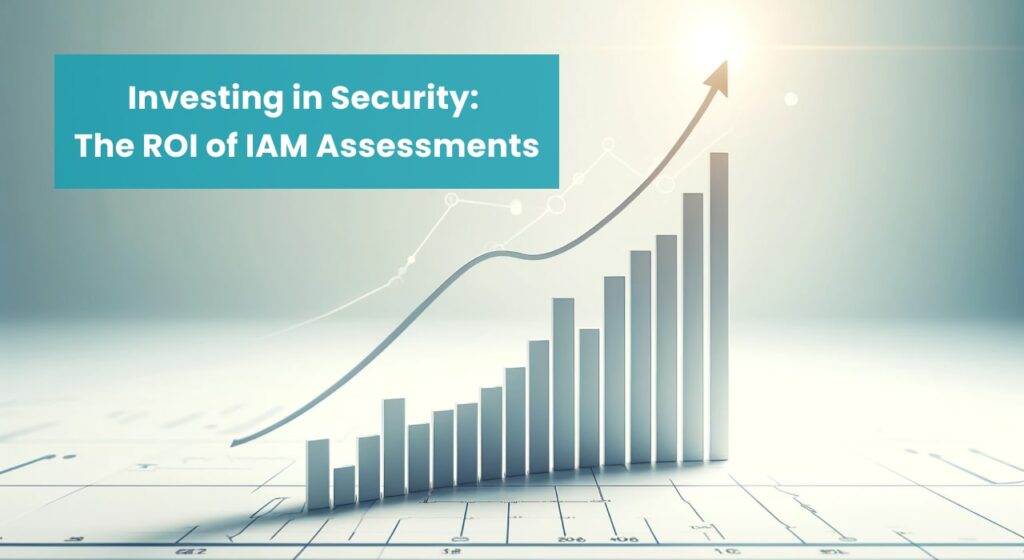
The Australian business landscape is increasingly vulnerable to cyberattacks. In 2023 alone, major data breaches at Optus and Medibank exposed the personal information of millions of Australians, highlighting the critical need for robust cybersecurity measures. These incidents resulted in significant financial losses, reputational damage, and potential legal repercussions for the affected companies.
One crucial element of an effective cybersecurity strategy is Identity and Access Management (IAM). IAM acts as a digital gatekeeper, ensuring only authorized individuals can access sensitive data and systems. Just as a physical security system controls access to buildings, IAM establishes a layered approach to managing user identities, access privileges, and authentication methods.
However, many Australian businesses face a dilemma. While they recognize the importance of IAM, concerns about the upfront cost of assessments can be a barrier to implementation. This article delves into the cost-benefit analysis of IAM assessments, offering a clear picture of the financial implications and the potential long-term return on investment for Australian businesses. We will explore how thorough assessments, despite the initial expense, can ultimately save organizations significant costs associated with data breaches, regulatory non-compliance and operational inefficiencies.
The Australian Cybersecurity Landscape

The Australian business community is navigating a cyber threat landscape that is constantly evolving and intensifying. The Australian Cyber Security Centre (ACSC) reported a significant rise in cybercrime incidents targeting Australian organisations in 2023, with a particular focus on ransomware attacks and data breaches. These attacks disrupt operations, damage reputations, and inflict substantial financial losses.
The Australian Chamber of Commerce and Industry (ACCI) estimates that cybercrime cost Australian businesses a staggering $39 billion in 2023, a figure that is projected to rise further in the coming years. This alarming trend underscores the urgency for Australian businesses to prioritize robust cybersecurity measures.
Beyond the immediate financial repercussions, inadequate cybersecurity practices can lead to non-compliance with Australia’s data privacy regulations. The Notifiable Data Breaches (NDB) scheme, enforced by the Office of the Australian Information Commissioner (OAIC), mandates that organisations report any data breaches involving personal information to affected individuals and the OAIC itself. Failure to comply with the NDB scheme can result in significant fines, further eroding public trust and hindering business operations.
A critical vulnerability in this scenario is a lack of effective Identity and Access Management (IAM) controls. Weak IAM practices can leave sensitive data and systems exposed, creating easy entry points for cybercriminals. By implementing robust IAM solutions and conducting regular assessments, Australian businesses can significantly strengthen their cyber defences, ensuring compliance with data privacy regulations and mitigating the financial and reputational risks associated with cyberattacks.
Understanding IAM and its Benefits

Identity and Access Management (IAM) acts as the cornerstone of an organization’s digital security posture. It’s a comprehensive framework that governs user identities within a network, ensuring only authorized individuals possess the appropriate access privileges to critical data and systems. IAM operates like a sophisticated key management system, meticulously controlling who has the metaphorical keys and to which digital doors.
At the heart of IAM lie three core functionalities:
- User Provisioning: This streamlines the process of onboarding new users by efficiently creating and managing their digital identities within the system.
- Access Control: IAM establishes a layered approach to access privileges. It determines what information and functionalities each user can access, preventing unauthorized individuals from venturing into restricted areas of the digital landscape.
- Authentication: This function verifies a user’s claimed identity before granting access. Multi-factor authentication (MFA), a key component of IAM, adds an extra layer of security by requiring additional verification steps beyond just a username and password.
By meticulously controlling user access, IAM safeguards sensitive data and systems from unauthorized intrusion. Imagine a physical office building with restricted access areas. IAM functions like a sophisticated security system, granting access cards (usernames and passwords) only to authorized personnel and requiring additional verification (MFA) for highly sensitive areas. This multi-layered strategy substantially diminishes the risk of unauthorized entry and potential data breaches.
Implementing a robust IAM system offers a multitude of benefits for Australian businesses. Firstly, it enhances compliance with data privacy regulations like the Notifiable Data Breaches (NDB) scheme. Strong IAM practices demonstrate an organization’s commitment to data security and minimize the risk of regulatory fines associated with data breaches. Secondly, IAM significantly reduces the risk of cyberattacks by eliminating unauthorized access points. This translates to a direct financial benefit, as businesses avoid the substantial costs associated with data breaches, including recovery efforts, reputational damage, and potential legal repercussions. Finally, a well-designed IAM system can streamline operational efficiency. Automating user provisioning and access management tasks frees up IT resources and allows employees to focus on core business activities.
What is an IAM Assessment?

An IAM assessment is a comprehensive evaluation designed to scrutinize an organization’s Identity and Access Management (IAM) practices. Functioning like a security audit, it meticulously examines an organization’s IAM controls to identify potential vulnerabilities and areas for improvement. This proactive approach helps businesses stay ahead of cyber threats and ensure their data and systems remain secure.
The scope of an IAM assessment typically encompasses a range of critical areas. It evaluates the effectiveness of user access controls, ensuring only authorized individuals have access to the information and functionalities they require for their job roles. Password policies are also rigorously examined to assess their strength and compliance with industry best practices. Additionally, privileged access management, which governs access to highly sensitive systems and data, is thoroughly reviewed to identify any weaknesses that could be exploited by malicious actors.
The depth and breadth of an IAM assessment can be tailored to an organization’s specific needs and budget. High-level assessments offer a general overview of IAM effectiveness, while comprehensive assessments provide a deep dive into all aspects of IAM practices. Choosing the right assessment type allows businesses to gain valuable insights into their security posture while ensuring a cost-effective approach.
The Cost of an IAM Assessment
Conducting an IAM assessment involves an initial investment. However, this upfront cost pales in comparison to the potential financial repercussions of a data breach or non-compliance with data privacy regulations.
The cost of an IAM assessment in Australia can vary depending on several factors. The size and complexity of an organization significantly influence the price. Larger organizations with intricate IT environments and a vast user base typically require more extensive assessments, leading to higher costs. Additionally, the chosen type of assessment plays a role. High-level assessments, offering a general evaluation, are typically more affordable than comprehensive assessments that delve deep into all aspects of IAM practices.
When selecting a vendor for an IAM assessment, it’s crucial to consider their expertise and experience. Renowned cybersecurity firms with a proven track record in IAM assessments might command a premium compared to smaller providers. However, their specialized knowledge can identify critical vulnerabilities that less experienced vendors might miss, potentially saving the organization significant costs down the line.
Industry reports suggest that the cost of IAM assessments in Australia can range from $5,000 for a high-level assessment for a small organization to $50,000 or more for a comprehensive assessment of a large enterprise. Some vendors offer fixed-fee pricing for specific assessment packages, while others may charge hourly rates for their services. Carefully evaluating your organization’s needs and budget allows you to choose the most cost-effective assessment option while ensuring a thorough evaluation of your IAM posture.
The Benefits of Conducting an IAM Assessment

While the initial cost of an IAM assessment might raise eyebrows, the long-term benefits it offers far outweigh the upfront expense. Think of it as an investment in proactive security, helping businesses identify and address security vulnerabilities in their access control practices before they become exploited by cybercriminals.
An IAM assessment acts as a security flashlight, illuminating areas of weakness within an organization’s IAM infrastructure. It exposes inadequate user access controls, allowing unauthorized individuals to gain access to sensitive data. Weak password policies are also unearthed, creating easy entry points for hackers. Additionally, the assessment scrutinizes privileged access management, identifying potential gaps that could enable malicious actors to escalate their privileges and wreak havoc on critical systems. By pinpointing these vulnerabilities, businesses can implement corrective measures, fortifying their defences and significantly reducing the attack surface.
The financial benefits of conducting an IAM assessment can be substantial. Consider the hefty price tag associated with a data breach. According to the IBM Cost of a Data Breach Report 2023 IBM Security: Cost of a Data Breach Report 2023, the average cost of a data breach in Australia reached a staggering $4.03 million. This figure encompasses the cost of detection, investigation, notification, and remediation, not to mention the potential for lost revenue, reputational damage, and legal repercussions. A thorough IAM assessment, by identifying and addressing vulnerabilities, can act as a preemptive strike against data breaches, potentially saving organizations millions of dollars.
Beyond the immediate financial benefit, IAM assessments play a crucial role in achieving compliance with data privacy regulations in Australia. The Notifiable Data Breaches (NDB) scheme, mandated by the Office of the Australian Information Commissioner (OAIC) Office of the Australian Information Commissioner (OAIC) website: https://www.oaic.gov.au/, requires organizations to report any data breaches involving personal information. Failure to comply can result in significant fines, further eroding public trust. An IAM assessment ensures alignment with the NDB scheme’s requirements by evaluating the effectiveness of data breach detection and reporting procedures. This proactive approach minimizes the risk of non-compliance and associated penalties.
Furthermore, improved IAM can lead to increased productivity and operational efficiency. Streamlined access management processes, facilitated by a robust IAM system, free up valuable IT resources. Imagine the wasted time and frustration employees experience due to cumbersome access request procedures. By automating user provisioning and access management tasks, IAM assessments contribute to a smoother workflow for employees, allowing them to focus on core business activities. This translates to increased productivity and overall operational efficiency for the organization.
Cost-Benefit Analysis: Making an Informed Decision

While the upfront cost of an IAM assessment might seem like a hurdle, it’s crucial to weigh it against the potential long-term financial benefits for Australian businesses.
Consider the significant cost savings associated with preventing a data breach. The IBM Cost of a Data Breach Report 2023 revealed the average cost of a data breach in Australia to be a staggering $4.03 million. This pales in comparison to the cost of an IAM assessment, which typically ranges from $5,000 to $50,000 depending on the organization’s size and chosen assessment type.
Furthermore, robust IAM practices contribute to compliance with data privacy regulations like the Notifiable Data Breaches (NDB) scheme. Non-compliance can result in hefty fines, further eroding consumer trust. An IAM assessment acts as a safeguard, ensuring alignment with NDB requirements and minimizing the risk of financial repercussions.
Australian businesses must consider the cost of inaction. Data breaches, regulatory fines, and reputational damage can cripple an organization. Investing in an IAM assessment is a proactive approach that strengthens cybersecurity posture, fosters compliance, and ultimately protects an organization’s bottom line.
To make an informed decision, businesses should conduct a cost-benefit analysis. Evaluate the cost of potential data breaches and regulatory non-compliance against the investment required for an IAM assessment. Factor in the long-term benefits of improved security, operational efficiency, and enhanced brand reputation. By adopting this strategic approach, Australian businesses can make a sound financial decision that safeguards their digital assets and fosters a secure future.
In today’s ever-evolving cyber threat landscape, robust Identity and Access Management (IAM) is no longer a luxury for Australian businesses; it’s a fundamental necessity. Data breaches and regulatory non-compliance pose significant financial and reputational risks. Investing in IAM assessments offers a proactive solution, enabling businesses to identify and address security vulnerabilities before they become costly exploits. By prioritizing IAM assessments, Australian businesses can safeguard their digital assets, foster a culture of data security, and ensure long-term financial stability.
